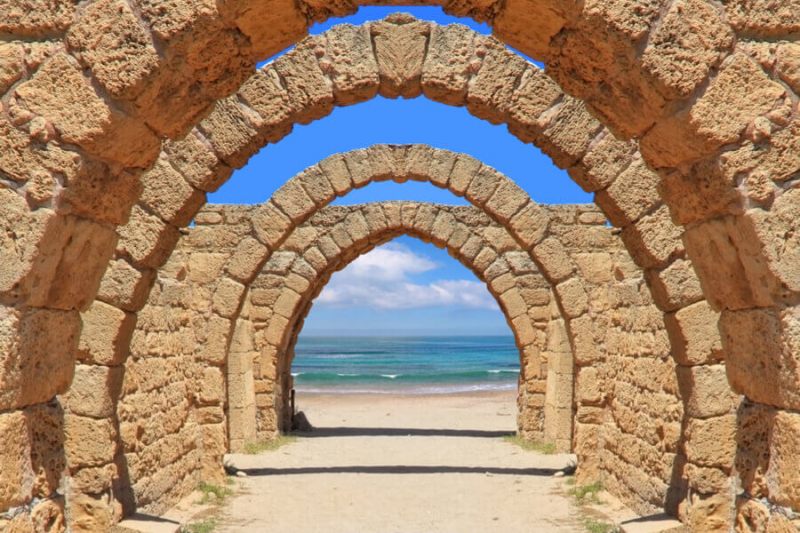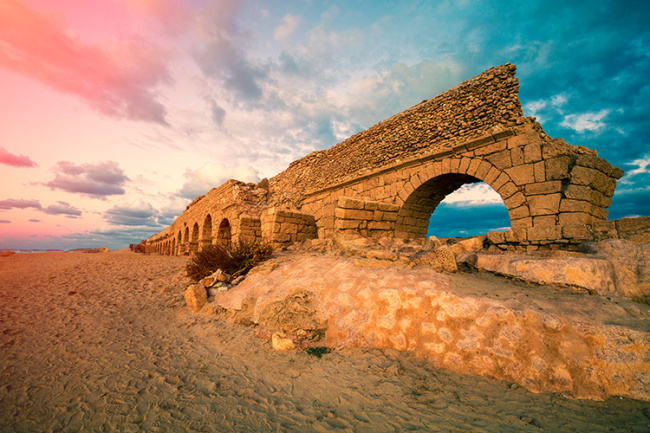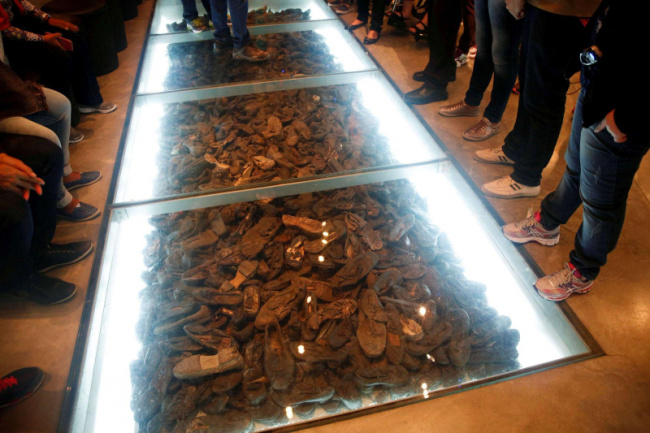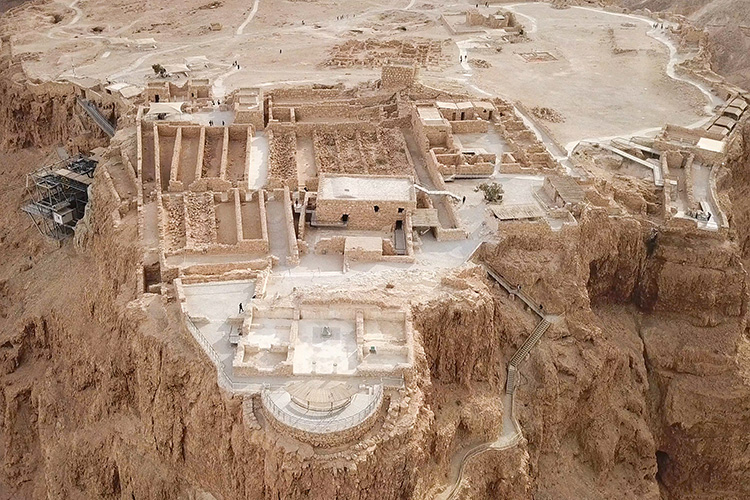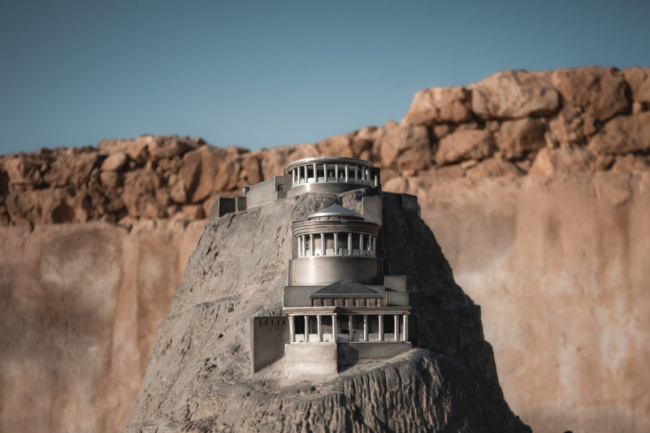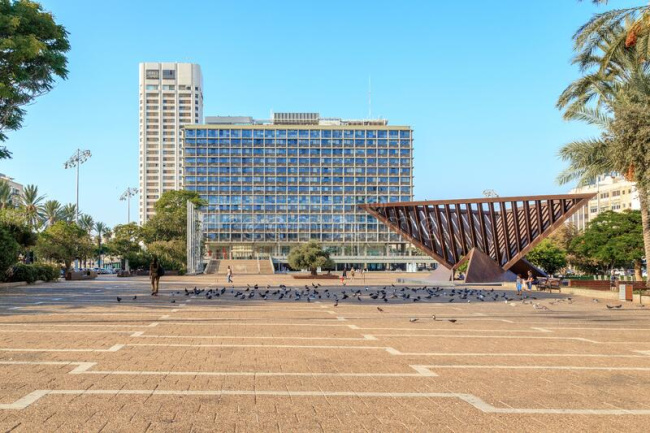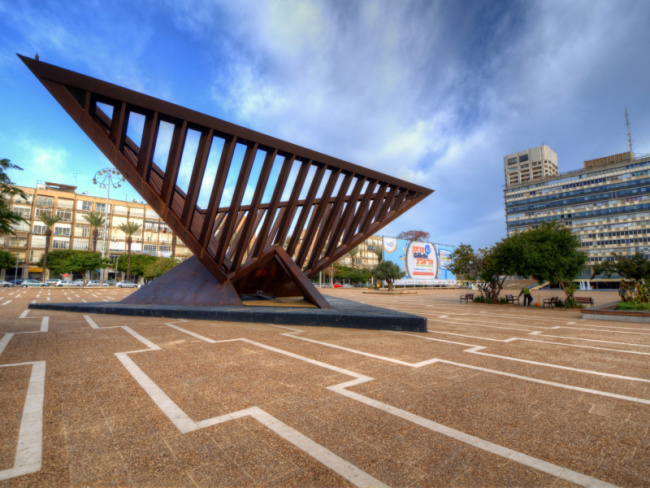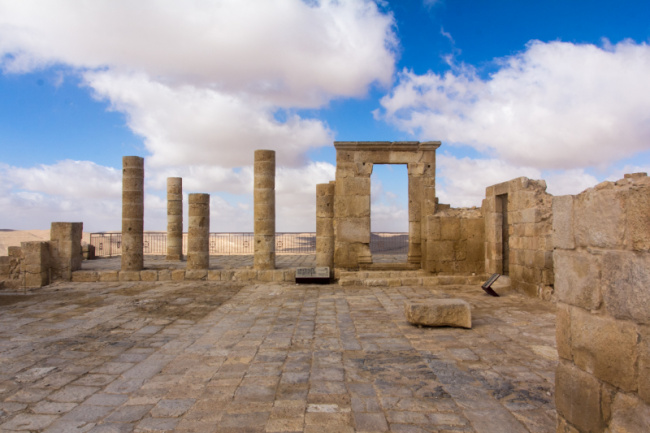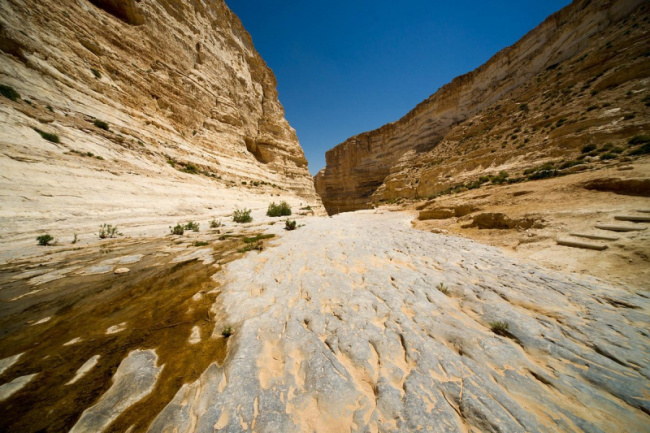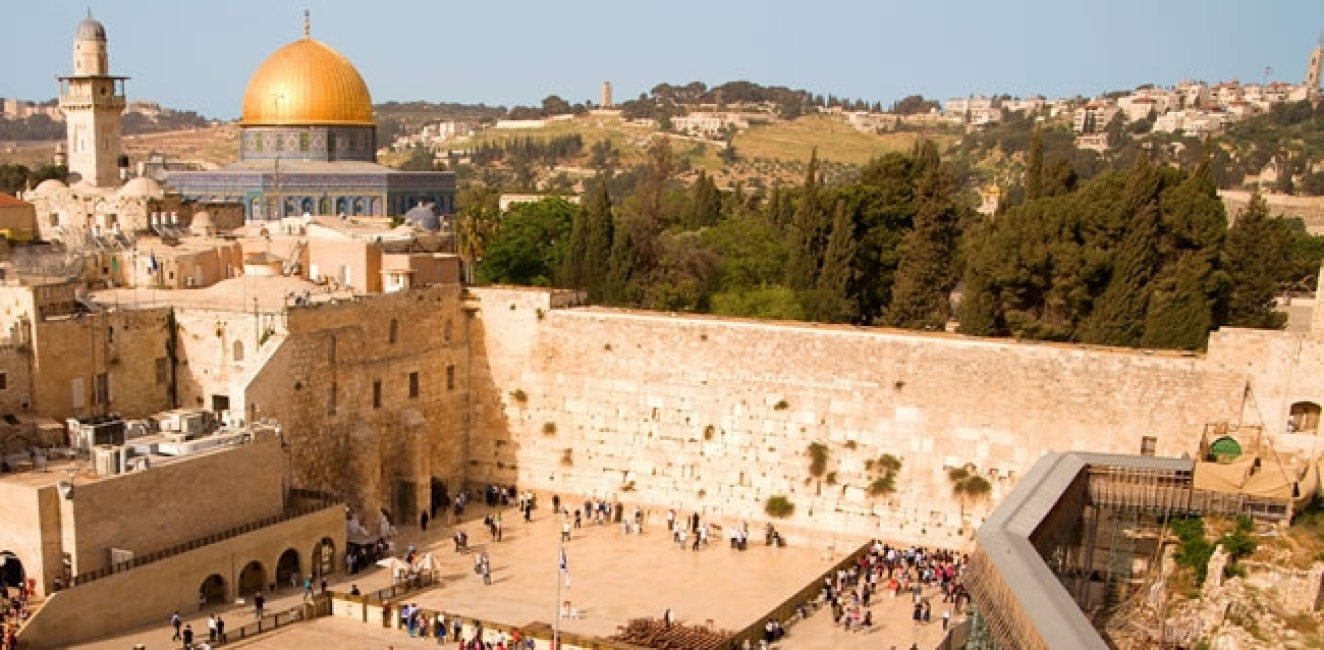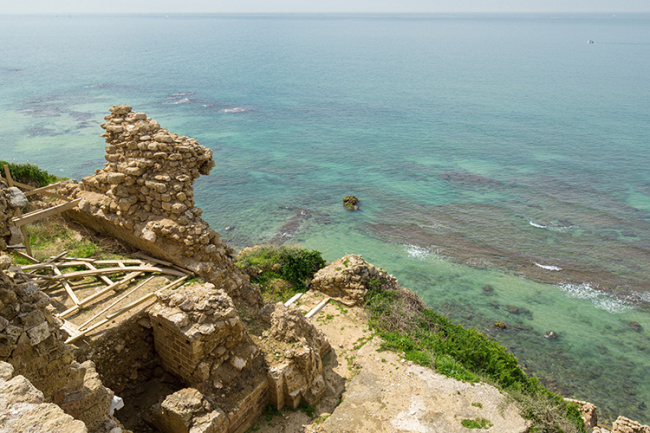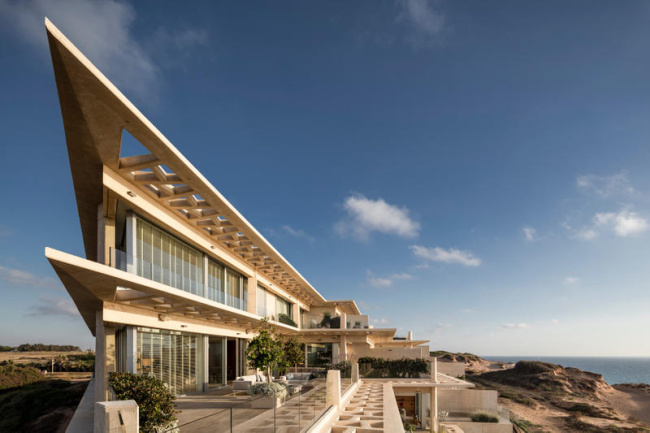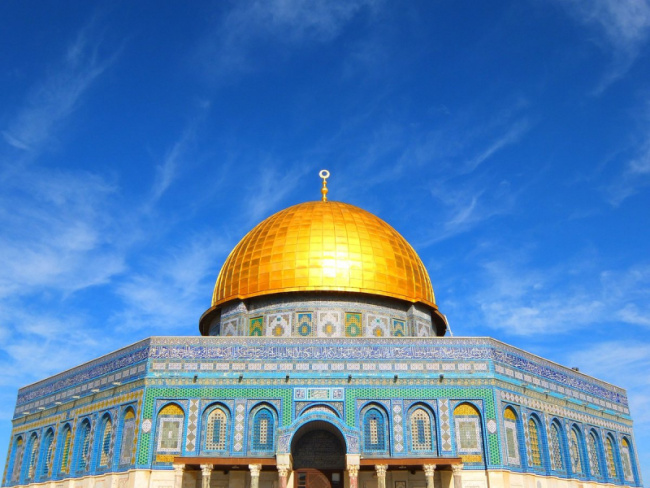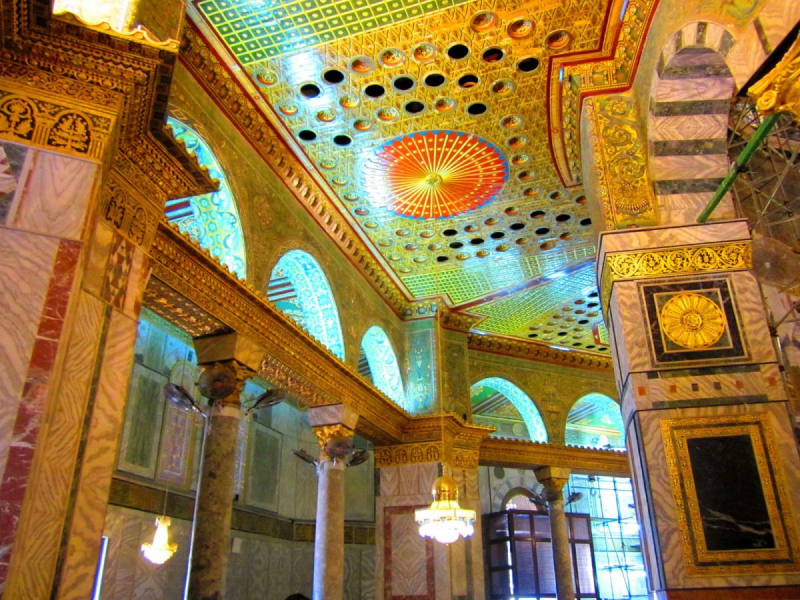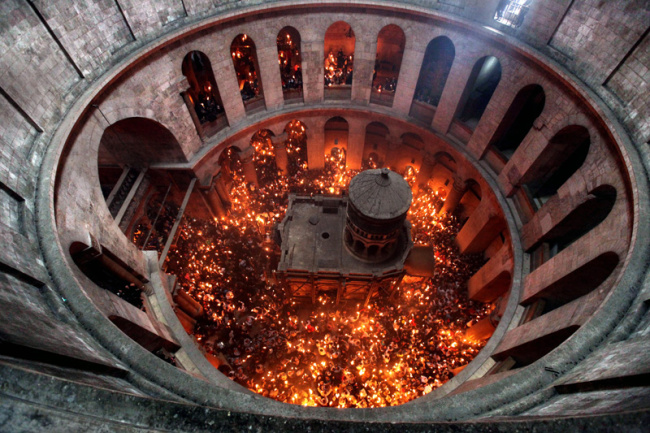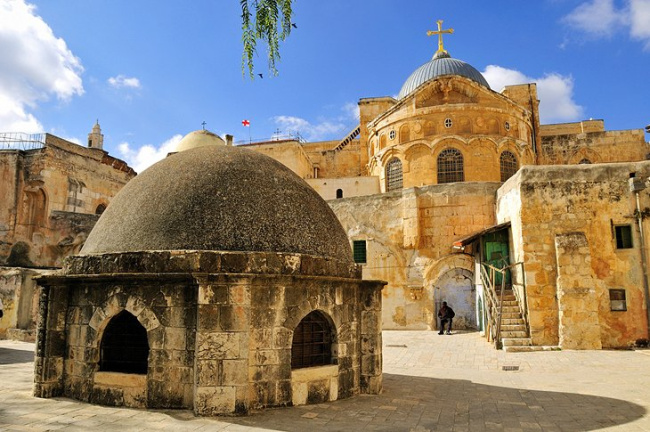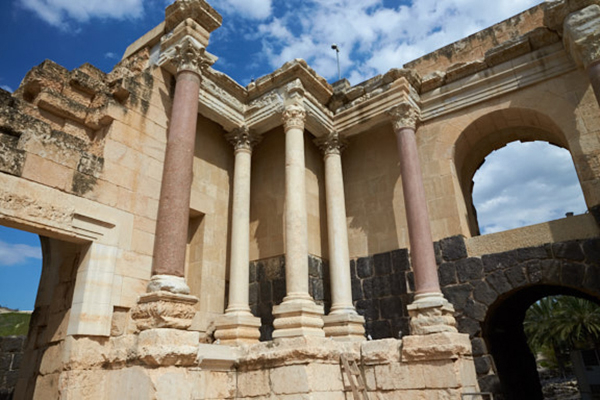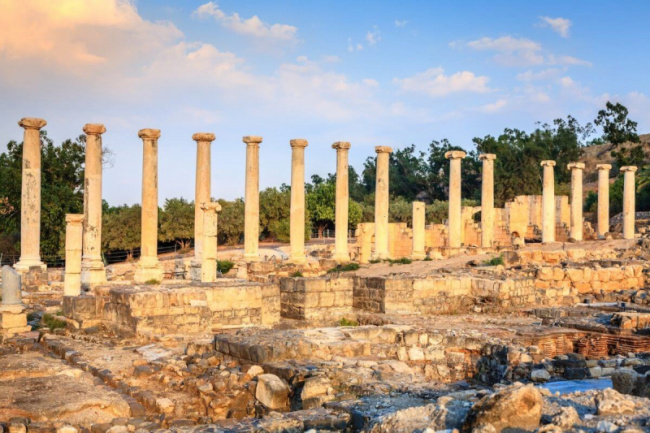1. Ceasarea, 2. Yad Vashem, 3. Masada, 4. Rabin Square, 5. Avdat, 6. The Western Wall, 7. Arsuf, 8. Dome of the Rock, 9. Church of the Holy Sepulchre, 10. Beit She’an. The land that is now modern Israel has been the meeting place of religions, empires, and cultures since time immemorial. Indeed, it’s hard to find a destination with a richer history. From the ancient city of Jerusalem and the old ports of Jaffa and Acre through to the country’s excellent modern museums, there are so many incredible tourist attractions in Israel that it’s hard to know where to start. If you’re seeking inspiration our selection of the top ten sights in Israel will set you on your way. Toplist included some of the most famous attractions in the country as well as a few most beautiful historical sites in Israel that you may not know.
- Ceasarea
- Yad Vashem
- Masada
- Rabin Square
- Avdat
- The Western Wall
- Arsuf
- Dome of the Rock
- Church of the Holy Sepulchre
- Beit She’an
Ceasarea
Caesarea or “Keysarya” was an Ancient Roman city that is now a part of the list of most beautiful historical sites in Israel. It is believed that the city of Caesarea was initially founded atop the ruins of Straton’s Tower, a third-century BC Phoenician port city. Conquered by King Alexander Jannaeus of the Hasmonean Kingdom in 90 BC, Caesarea’s population remained under local control until it was taken by the Romans in 63 BC. Caesarea became a thriving commercial hub that hosted sporting events, as well as a city of significance for Christians, and it flourished further under the Byzantines. Some even would say rivaling Carthage and Alexandria in terms of importance as port cities.
Caesarea Maritima, as the old city is called, shouldn’t be mistaken for the modern town of Caesarea. The ruins of the old city offer plenty to explore, including a large amphitheater overlooking the ocean and an extensive labyrinth of ruins. Some of the most imposing remains at Caesarea are its Crusader fortifications. Allow at least half a day to fully explore the ruins and make the most of the gorgeous seaside location.
Nearby, visitors can also explore the stunning remains of the Caesarea Aqueduct. Caesarea is about 55km north of Tel Aviv, on the Mediterranean coast. Depending on traffic, it should take between 60 and 90 minutes to drive via Route 2, along the coast. Buses run from Tel Aviv to the Or Akiva Interchange: the bus takes about an hour, and from there it’s another 40 minutes of walking
Bein Harim
History Hit
Yad Vashem
Yad Vashem in Jerusalem is a museum and Israel’s official memorial to the victims of the Holocaust. Beginning with the persecution of the Jews in Germany in 1933, the Nazi Party, under the leadership of Adolf Hitler, began a campaign in which Jews and other social and ethnic groups were taken into forced labor and extermination camps, suffering torture, intolerable conditions, and mass executions. Over six million Jews died during the Holocaust, and at least five million people from other ethnic or social groups which the Nazis also deemed ‘undesirable’ were murdered alongside them.
The founding of the State of Israel is inextricably linked with this event, and Yad Vashem was established in 1953 – the name comes from Isaiah 56:5, and literally means ‘a memorial and a name. Most visitors to Yad Vashem spend their time at the Holocaust History Museum – it’s incredibly moving and worth visiting. Unlike other Holocaust memorial sites, Yad Vashem details the events which preceded the Holocaust and explain how and why anti-Semitism was so prevalent across Europe around this period. It tells the story of this grim and tragic chapter of history through exhibits including photographs, victims’ accounts, art installations, and information panels.
The Hall of Names remains one of the most moving parts of the whole sight, and it’s not unusual to see people leaving in tears: the hole in the floor symbolizes all of those who died whose names will never be known as everyone who might have remembered or mourned them perished too. It’s hard to find the words to describe the harrowing nature of some of what’s on display, but this makes Yad Vashem all the more important a site to visit and remember.
The Time of Isreal
middle-east-online.com
Masada
The majestic fortress of Masada rises above the Dead Sea in the middle of the Judaean Desert. Today, it’s one of the most beautiful historical sites in Israel. Masada’s history is almost exclusively known through the eyes of the 1st-century Jewish Roman historian, Josephus. It’s believed the site of Masada was first identified, settled, and fortified around the 1st century BC by a Hasmonean king called Alexander Jannaeus, although archaeology is yet to confirm this.
Sometime around 37BC, Herod the Great, King of Judaea, captured Masada and refortified it, turning it into a true fortress that could be a refuge in case of unrest or a revolt. As well as being a fortress, he also ensured it was comfortable – inside the walls were two palaces, even featuring a bathhouse, which is remarkable given the desert location. The site of Masada, which was unearthed in the 19th century, clearly marks the passage of the siege. Major archaeological excavations took place during the 1960s and revealed many of the fortress’ secrets. Thanks to its remote location, the site had been incredibly well preserved and offers a fascinating insight into the palace that once stood there.Masada is breath-taking, even today: the sheer determination to build such a site so far away from civilization, and the serious efforts made by the Romans to capture it. Climb to the top for sunrise for romantic views over the desert, and gorgeous light. Access is either via cablecar (speedy) or the long, sweaty climb up the side of the mountain itself. The Snake Path wiggles its way from top to bottom: traditionally, it was the only way up or down, and didn’t have enough space for two people to pass each other. It’s worth walking up or down it to appreciate quite how remote Masada is.
Viator
The Happy Jetlager
Rabin Square
Rabin Square (Kikar Rabin) is a large public plaza in Tel Aviv, Israel. Formerly called Israel Kings’ Square, it was renamed Rabin Square after Prime Minister Yitzhak Rabin, who was assassinated there in 1995. Originally known as the Kings of Israel Square, it was designed alongside Tel Aviv’s city hall in 1964. For the first 30 years of its existence, the square was a site for political demonstrations and allies. Most famously, it was used on Israel’s Independence Day (Yom Ha’atzmaut) as a military exhibition ground for the Israeli Defence Force.
In 1995, Prime Minister Rabin was assassinated here on 4 November, just after he had given a speech at a peace rally. People flocked to mourn Rabin in the days after his death, particularly young people, who were nicknamed the ‘Candle Youth’. Rabin’s speech is now engraved at the top of the stairs at Rabin Square in Hebrew, English, and Arabic. The fate of the square came under much criticism around this time, mainly due to its run-down appearance. After years of deliberation, minor renovations were carried out in 2010.
Today Rabin Square has a memorial to Yitzhak Rabin and still bears much of the pro-peace graffiti which was created following his death. It also has a small memorial sculpture at its southern end commemorating the Holocaust. Centrally located in Tel Aviv, Rabin Square still serves as a popular spot for demonstrations, peace rallies, exhibitions, and public gatherings however on most days it looks like a typical city plaza. Rabin Square is located in central Tel Aviv: City Hall is on the northern side of it.
Dreamstime.com
Time Out
Avdat
Avdat or “Ovdat” is one of the most beautiful historical sites in Israel which houses the pretty remains of an ancient Nabatean city later inhabited by the Romans, the Byzantines, and the Arabs. It was declared a UNESCO World Heritage site in 2005 as one of four Desert Cities of the Incense Route. Avdat was founded around the 3rd century BC, and quickly became one of the most important cities on the trading route known as the Incense Route which ran from the Mediterranean to south Arabia. Behind Petra, it was the second most important city on the route for around 800 years. The main commodities along this route were frankincense, myrrh, and spices.
Avdat prospered under the Nabateans from 30 BC to 9 BC, during the reign of King Aretas IV, but needed to be rebuilt after it was destroyed by Arab tribes in the late 1st century BC. This was carried out under Nabatean King Rabbel. However, in 106 AD, during Rabbel’s reign, Avdat was captured by the Romans, who built a military camp and bathhouse on the site.
Avdat remained prosperous throughout the Byzantine period, but an earthquake in 630 AD seriously damaged the city. Only a few years later, the city was taken by Arab forces.
In addition to well-preserved fortifications, the ruins at Avdat include a caravanserai, homes, a Roman military camp, fourth-century churches, a street, and a bathhouse. Many of the ruins are Roman, but the Nabatean influence can still be seen, including the ruin of a temple. The visitor center is next to the petrol station on Route 40: there’s a relatively useful film on the history of the Incense Route which is shown regularly. From the visitor center, you can walk or drive up a steep path to the ruins of the ancient city itself. There’s plenty to explore and it is a remarkable sight – it’s not normally too crowded, and if you go early or late you may well get the place (virtually) to yourself.Tripadvisor
The Western Wall
The Western Wall, also known as the Wailing Wall, Ha Kotel, and the Al-Buraq Wall, is the sole remaining part of the wall of the Second Temple of Jerusalem. The Second Temple, which stood from 516 BC, was the holiest of Jewish sites and was built to replace the First Temple. In around 20-19 BC, King Herod renovated the Second Temple, this being the time when the Western Wall was added. For this reason, the temple is sometimes known as Herod’s Temple.
In 1948, the Old City of Jerusalem was taken by the Jordanians, and the Jewish population was expelled. Israeli paratroopers stormed the site during the Six-Day War in 1957, and almost immediately bulldozed Arab houses surrounding the neighborhood. Originally the wall had houses pressed up against it: it would have appeared quite differently. The Western Wall is the holiest of Jewish sites, always surrounded by worshippers, many of whom place prayers in its crevices. While the lower half of what can now be seen dates to the time of Herod, the upper parts of the Wall were added in the seventh century AD. Look out for Bar Mitzvahs taking place on the holy site.
Whether you’re Jew or gentile, the wall thrums with history and spirituality: pray yourself, or take some time to watch those who find significance here. Remember to dress modestly (men must cover their heads to approach the wall) and the need for respect goes without saying. In addition to the external part of the Western Wall, visitors can also enter the Western Wall Tunnels, which show the extended parts of the structure. The Western Wall is part of the Temple Mount complex: to access it you’ll need to go through security.
The Times of Israel
Arsuf
Arsuf, also known as Apollonia, contains the remains of an ancient settlement on the Israeli coast that has stood for over 1,000 years. Arsuf is best known for the remains of a once-mighty Crusader castle which was once home to the Knights Hospitaller, but the site also contains remnants from the many other civilizations that have occupied the area. Founded by the Phoenicians in the 6th or 5th century BC, Arsuf was occupied by the Persians, Seleucid Greeks (from where it gained the name Apollonia), Romans, Byzantines, Muslims, and finally the Crusaders who captured the town in 1101 AD. In 1191 AD Richard the Lionheart defeated Saladin here in the Battle of Arsuf.
The area was fought over throughout the Crusader period and, from 1261 AD the fortress of Arsuf was occupied by the Knights Hospitaller. However, just four years later the Mamluk Sultan Baibars captured the fortress after a 40-day siege. His forces destroyed the town and the site was abandoned. Today, Arsuf has been excavated and is now part of Apollonia National Park. Visitors can see the remains of the Crusader fortress, including evidence from the final battle. The clifftop setting and impressive defensive moat bring to life the scale and drama of the once-mighty castle. Also on show are the remains of a Roman villa, which highlights the diverse nature of the settlement at Arsuf.
Visitors can wander through the remnants of Crusader chambers and the site contains useful information on the various areas of the ruins. The site itself takes only about an hour to view and contains some pleasant coastal and tranquil walkways. The view over the cliffs to the glittering Med below is glorious. During the holidays, events are often held here for children and the site can make for a good family day out. Purists are warned, that those core historians seeking to explore the atmosphere of the ancient ruins should check ahead to avoid these events, as the site can be overrun with children dressed as pirates!
HypeBeast
Dome of the Rock
The Dome of the Rock, known in Arabic as Qubbat as-Sakhrah, in Jerusalem is one of the most beautiful historical sites in Israel. Not only is its iconic golden dome an integral part of the Jerusalem landscape, but the Dome of the Rock and its location is of great significance to Muslims and Jews. The building of the Dome of Rock is considered the oldest existing Islamic structure, having been completed in 691 during the Umayyad Dynasty. The site chosen for its construction is believed by Muslims to have been that of the Prophet Muhammad’s ascent to heaven.
The original building was not so different from the one visible today, covered with mosaics, verses from the Quran, and a lavish solid gold dome. The Dome of the Rock briefly fell into Christian hands, when it was repurposed as a church by the Crusaders, before being returned to Islam by Saladin. The Dome of the Rock is at the heart of religious and political tensions in Jerusalem. It’s not unusual for the whole complex to be closed during periods of unrest, and only Muslims are permitted to enter the Dome itself – modestly attired non-believers can walk around the complex to appreciate the beauty of the building, but be warned, the guards are strict about clothing so really make sure no flesh is showing.Technically the Dome of the Rock is not a mosque but rather a shrine, and due reverence is expected inside. The interior is said to be just as lavish by those who are permitted to enter. If you do visit inside, look out for the oldest known mihrab in the Islamic world, and the steps down to the Well of Souls, where supposedly the voices of the dead can be heard as they pass onto eternity.
Church of the Holy Sepulchre
The Church of the Holy Sepulchre in Jerusalem is the holiest site in Christianity due to the fact that it encompasses what are thought to be the last five stations traveled through by Christ, ending in his crucifixion. Built-in 325/6AD by Roman Emperor Constantine I (the first such emperor to convert to Christianity), the Church of the Holy Sepulchre is located on what many Christians believe to be Golgotha/The Hill of Cavalry, where Christ is said to have been crucified and later resurrected. It derives its name – Sepulchre, meaning the tomb- from the belief that it is the site of Jesus’ burial.
It was Constantine’s mother, Helena, who went to Jerusalem and identified the site. Prior to the building of the Church of the Holy Sepulchre, the land on which it stands had been a temple to the deity Aphrodite, built by Emperor Hadrian.
The sepulcher, the burial place of Jesus, is at the core of the church whilst the other four stations are clustered in The Hill of Cavalry. The décor of this section of the church is noticeably more opulent and is believed to be the site of Jesus’ crucifixion.
The Church of the Holy Sepulchre has been destroyed and rebuilt several times throughout the centuries.
The church is a major pilgrimage site: it’s often extremely busy, with pilgrims waiting to touch holy relics and spots. Security is tight, and guards are strict – cover your legs, shoulders, and midriff before entering or you may well be refused entry or asked to leave. Having said that, it’s an amazingly atmospheric place, and even if for non-believers, the sheer history the site is steeped in feels monumental. The main entrance is via Christian Quarter Rd, deep in the snarl of roads and paths that make up Jerusalem’s Old Town. There are other entrances via Dabbaga Rd and the rooftop Ethiopian Monastery.
iDigHashware
PlanetWave
Beit She’an
The ancient city of Beit She’an in the northern Jordan Valley is an immensely impressive archaeological site with remains dating back mostly to the Roman and Byzantine period. The site itself has an extensive history dating back to around the 5th millennium BC and was a significant settlement by the Bronze Age period. During the Late Bronze Age, when the Egyptians ruled the area, Beit She’an served as the administrative center of the region.
As the Egyptians lost control of the region, around the 12th century BC, the Egyptian city was destroyed by fire and a Canaanite city rose in its place before the Philistines conquered the area. It was during this period that Beit She’an gained a Biblical reference when the Israelites under King Saul were defeated at the Battle of Mount Gilboa – it is said that the body of Saul was hung from the city’s walls, along with the bodies of his sons. The city was then captured by the Israelite king David and formed part of the Israelite kingdom until its destruction by the Assyrians in 731 BC.
Today visitors to the site can explore the remains of ancient Beit She’an which sits on the eastern side of the modern city of the same name. Among the ruins are the impressive colonnaded main street (known as Palladius Street), parts of the defensive walls, the reconstructed Roman theatre, an ancient amphitheater, Byzantine bathhouse, and even structures dating back to the Egyptian and Canaanite periods, such as a large Canaanite temple and the ancient house of the Egyptian governor. The remains of the Crusader castle can also be visited as well as a Mamluk-era mosque.
Immanuel Tours

